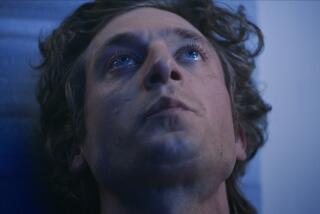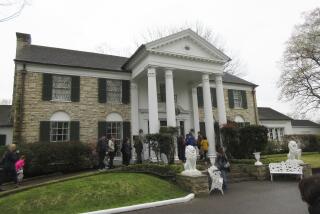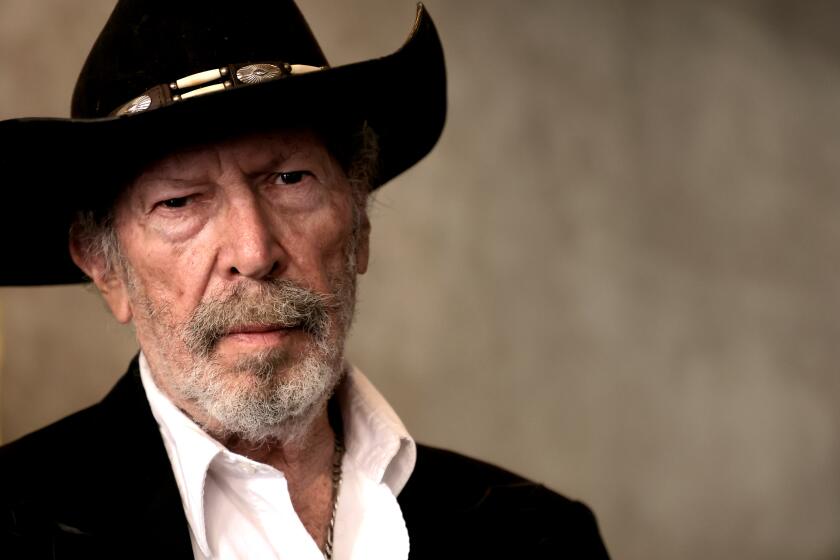Agent provocateur
ALMOST everyone in the underground world of gay bars in the 1950s knew Rock Hudson was gay. Even if he had not been unabashedly public in his cruising -- the Farmers Market at 2 a.m. -- he would have been suspect during those years of closetry simply because he was one of a stable of handsome (or “pretty”) young men whom Henry Willson, a notorious and powerful agent, plucked out of everywhere and transformed into screen heartthrobs with unlikely names -- Guy, Tab, Rory, Troy.
None was more famous than Hudson. According to Robert Hofler’s knowledgeable “The Man Who Invented Rock Hudson: The Pretty Boys and Dirty Deals of Henry Willson,” Willson gave Hudson etiquette lessons at famous restaurants (forbidding him to gather up the dinner dishes), taught him how to speak seductively (by forcing him to scream with a sore throat), had his teeth straightened and supported him in style during a probationary period. Afterward, he lived luxuriously off Hudson’s stardom and that of his other clients, until almost all fired him.
Legend holds that Willson had sex with all his discoveries. That is unlikely. Many were not gay (although some of those may well have been available), and others resisted his overtures. Still, Willson’s fame was such that squads of hopeful young men, gay or not, were eager to accept his terms -- and definitely not because of his physical appearance. (“He had the silhouette of Alfred Hitchcock,” remarked Race Gentry, one of Willson’s finds.)
What remains astonishing about Hudson is that the rest of the world had to wait more than 30 years -- until the tragedy of AIDS -- to learn that this ultra-masculine romantic hero was gay. To achieve necessary concealment at a time when reputations were smashed by the merest rumors of homosexuality, Willson and studio heads reportedly resorted to hiring thugs to threaten potential blackmailers.
The studios also dictated rigorous public behavior, particularly for their gay stars. A cadre of young actresses accompanied them to Hollywood events, often as the purported objects of courtship; Terry Moore, Vera-Ellen, Natalie Wood and others were photographed with gay dates. Gossip columnist Louella Parsons announced spurious romances, including one between Willson and the nation’s first daughter Margaret Truman. After hints of impending exposure, Hudson married Phyllis Gates, Willson’s secretary.
Those protective subterfuges were occurring during the Red witch hunts, initiated by the House Un-American Activities Committee and continued by Sen. Joseph McCarthy, a campaign that began by exposing “Commies” and turned to exposing “queers” in government. It was a dangerous time, and one that Hofler evokes vividly. Even the FBI became involved in an investigation of Hudson’s sex activities, despite the fact that bureau insiders suspected that their boss, J. Edgar Hoover, was a homosexual.
Exposure was not the only reason for hiding. Homosexual sex between consenting adults was punishable by years in prison. Men dancing with each other in clubs might be arrested for lewd conduct. A vice squad raid on an innocuous pajama party in the Los Angeles suburb of Walnut Park netted Arthur Gelien, who later became Tab Hunter.
Wily maneuvers (not dealt with in this book) sometimes thwarted such arrests. At a club in Topanga Canyon, lights flashing off and on warned same-sex couples on the dance floor to shift partners, whereupon gay men would dance with lesbians, a legal pairing. A pianist at a gay bar in Hollywood would try embarrassing the invaders by breaking into the “Wedding March” whenever a cop (in black) and a member of the Navy’s shore patrol (in white) were spotted walking down the stairs together.
Hofler chronicles Willson’s life of privilege, revealing the agent’s paradoxical right-wing attitudes (he was dismayed by the Senate’s censure of McCarthy) and his intrigues to obtain power -- conspiracies hatched in such fabled Hollywood nightclubs as Cafe Trocadero and the Mocambo. He describes, as well, the sexual antics of powerful studio heads: David O. Selznick searched magazines for pictures of pretty girls, whom Willson would then bring to him for private auditions. “There is no expense, as she is coming to Los Angeles in two weeks to visit her brother,” he assured Selznick about one such liaison. Harry Cohn of Columbia had a passageway built connecting his office to the dressing rooms of his contract actresses. Darryl F. Zanuck of 20th Century-Fox stopped his workday at 4 p.m. for private “interviews” with would-be starlets. Unlike Willson’s proteges, few of the aspirants thus auditioned by Selznick, Cohn and Zanuck ever appeared in movies.
“The Man Who Invented Rock Hudson” is a trove of enticing gossip and little-known facts: Hofler notes that Willson represented not only young men but also famous female stars, including Lana Turner, whom he claimed to have discovered when she was 16. (When she first saw herself on-screen, Turner announced, “I hope I don’t look like that.”) To assure early attention for Hudson, Willson had him and Vera-Ellen, in bathing suits, painted gold to represent twin Oscars at the 1949 Hollywood Press Photographers ball. Willson had A- and B-list parties, the former for his handsomest boys and their most powerful potential mentors, the second for lesser boys, lesser mentors. He was not the only one in Hollywood with such dual standards: Years ago, this reviewer attended one of director George Cukor’s “boys’ dinners” by his statue-lined pool, where the guests were served a skimpy stew. The next day, Vivien Leigh was to be Cukor’s guest at dinner; she would not be served stew.
A dishy tone occasionally creeps into the book. While implicitly decrying contrived gossip, Hofler contributes some of his own. A weak disclaimer (“Henry’s tale may reveal more about the psychological makeup of its teller”) precedes a lengthy, heated account involving two of Willson’s handsomest male discoveries, both married. Willson supposedly spotted them in the back of a parked Jaguar coupe as he roamed Hollywood in a rainstorm; the two were coupling noisily while thunder clapped in awe. It must have been a very cramped situation indeed for the 6-foot-plus actors, especially given what they were said to be doing by the agent voyeur. At the end of this absurd tale, Hofler seems to be attempting to authenticate it by remarking that his source for Willson’s story, a gossipy minor actor, “believed every word of it.”
In one major area, Hofler’s book disappoints seriously. Because he conveys too little of their vulnerability and pathos -- at times seeming almost to snicker at them -- the “pretty boys” remain mostly one-dimensional. Whatever their eagerness to become stars at any cost, that group of young men is not unworthy of compassion. Hofler quotes a particularly fatuous remark of Tennessee Williams’: “The beautiful make their own laws.” That may be so, for a brief time, but their story afterward is often less glamorous. Rock Hudson ended up a shell of himself, dying of AIDS complications and hounded by the last man he lived with. Troy Donahue, in old age, developed arthritis and died of a heart attack. Nor were all of the pretty boys blessed by stardom; many simply faded away, along with their hopes. Hofler does not wonder where they went.
By the 1960s, the reign of Willson and his pretty boys was over. Hofler offers a likely reason for the decline: harsh social upheaval. “In the 1960s, with Vietnam and the escalation of the Cold War, ‘pretty’ continued its slide downward in the public consciousness,” he writes. “Sean Connery in ‘Goldfinger’ and ‘Thunderball’ wore a tuxedo as well as Rock Hudson (or Cary Grant) but he carried a license to kill.”
Another reason was put forth by Hudson himself: “The little uglies have taken over the business!” Purveyors of the Method school of acting groaned, contorted, twisted and gave birth to the likes of Dustin Hoffman, Robert De Niro and Al Pacino, effectively banishing the pretty boys (although never entirely; witness the soap operas and the Abercrombie & Fitch catalogs). But the closets are still crowded with Hollywood players terrified of being thought gay. Rap singers resort to homophobic lyrics to assert their heterosexuality. Middle-aged actors indulge in public displays of raging heterosexual romance. Marriages of convenience still occur.
The fascinating world Hofler so ably depicts is finally a sad one. Henry Willson, the rich and famous star maker, died penniless in 1978, at the Motion Picture Country Home in Woodland Hills, virtually all of his discoveries having scurried off to other agents because of the lingering gay associations his name evoked. There is no headstone on his grave. *
More to Read
The biggest entertainment stories
Get our big stories about Hollywood, film, television, music, arts, culture and more right in your inbox as soon as they publish.
You may occasionally receive promotional content from the Los Angeles Times.






